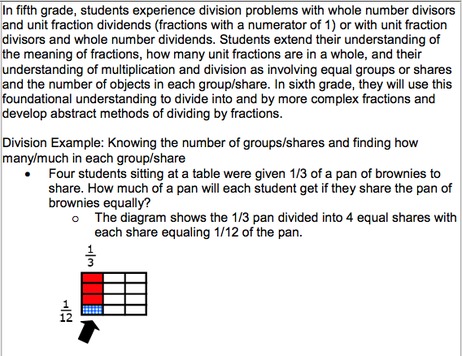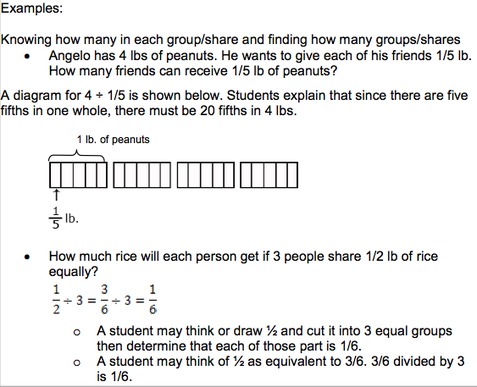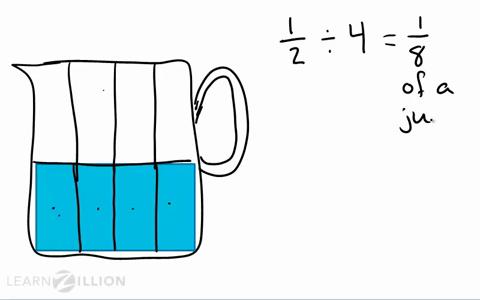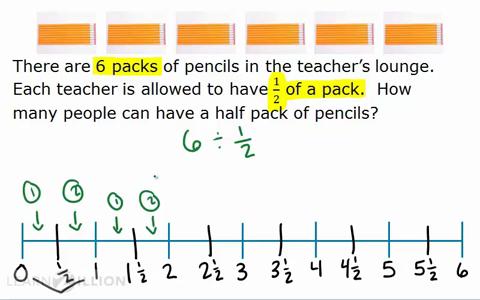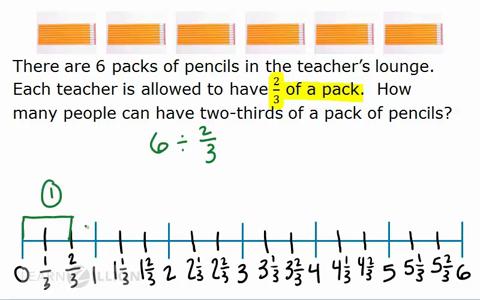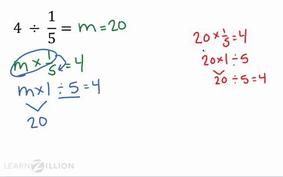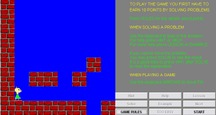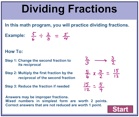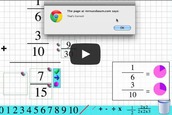Divide Fractions
I can divide fractions by whole numbers and whole numbers by fractions. 5.NF.7
5.NF.7. Apply and extend previous understandings of division to divide unit fractions by whole numbers and whole numbers by unit fractions. (Students able to multiply fractions in general can develop strategies to divide fractions in general, by reasoning about the relationship between multiplication and division. But division of a fraction by a fraction is not a requirement at this grade.)
a. Interpret division of a unit fraction by a non-zero whole number, and compute such quotients. For example, create a story context for (1/3) ÷ 4,
and use a visual fraction model to show the quotient. Use the relationship between multiplication and division to explain that (1/3) ÷ 4 = 1/12
because (1/12) x 4 = 1/3.
b. Interpret division of a whole number by a unit fraction, and compute such quotients. For example, create a story context for 4 ÷ (1/5), and use a
visual fraction model to show the quotient. Use the relationship between multiplication and division to explain that 4÷(1/5) = 20
because 20 x (1/5) = 4.
c. Solve real world problems involving division of unit fractions by non-zero whole numbers and division of whole numbers by unit fractions, e.g., by
using visual fraction models and equations to represent the problem. For example, how much chocolate will each person get if 3 people share 1/2 lb
of chocolate equally? How many 1/3-cup servings are in 2 cups of raisins?
5.NF.7. Apply and extend previous understandings of division to divide unit fractions by whole numbers and whole numbers by unit fractions. (Students able to multiply fractions in general can develop strategies to divide fractions in general, by reasoning about the relationship between multiplication and division. But division of a fraction by a fraction is not a requirement at this grade.)
a. Interpret division of a unit fraction by a non-zero whole number, and compute such quotients. For example, create a story context for (1/3) ÷ 4,
and use a visual fraction model to show the quotient. Use the relationship between multiplication and division to explain that (1/3) ÷ 4 = 1/12
because (1/12) x 4 = 1/3.
b. Interpret division of a whole number by a unit fraction, and compute such quotients. For example, create a story context for 4 ÷ (1/5), and use a
visual fraction model to show the quotient. Use the relationship between multiplication and division to explain that 4÷(1/5) = 20
because 20 x (1/5) = 4.
c. Solve real world problems involving division of unit fractions by non-zero whole numbers and division of whole numbers by unit fractions, e.g., by
using visual fraction models and equations to represent the problem. For example, how much chocolate will each person get if 3 people share 1/2 lb
of chocolate equally? How many 1/3-cup servings are in 2 cups of raisins?
